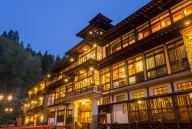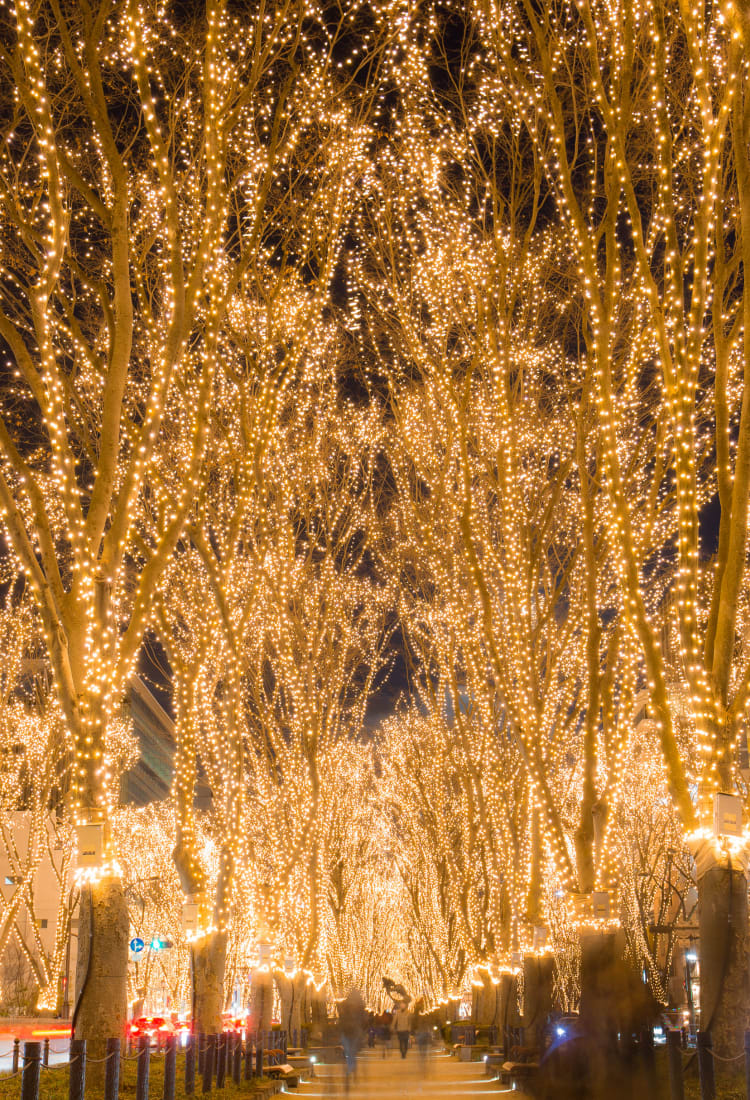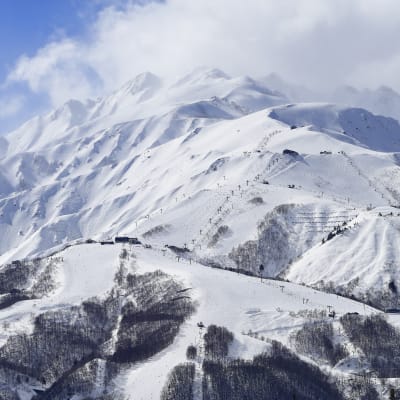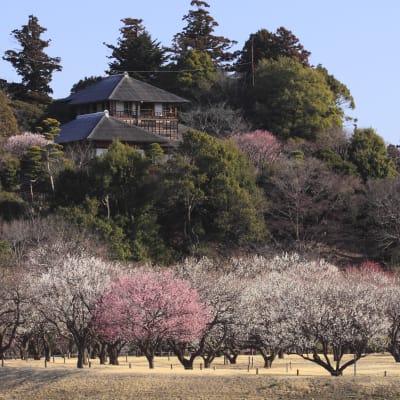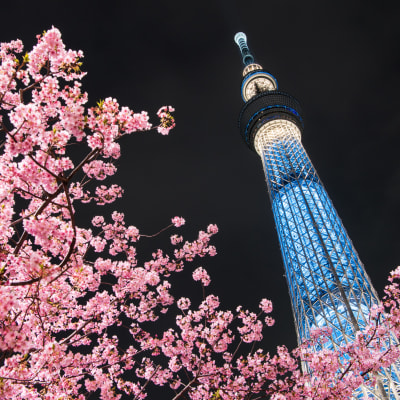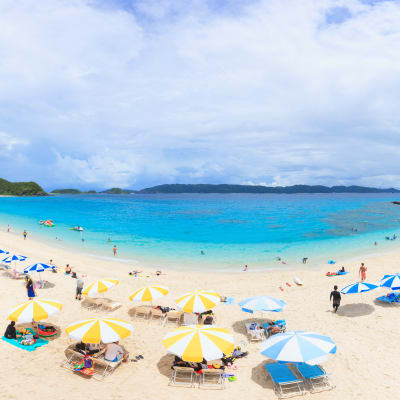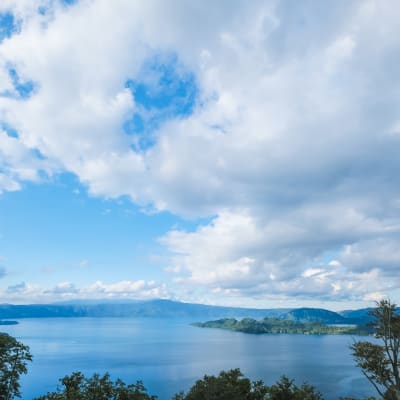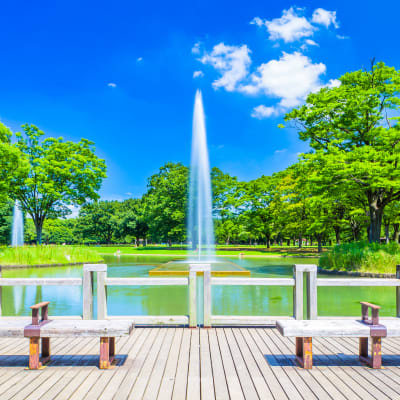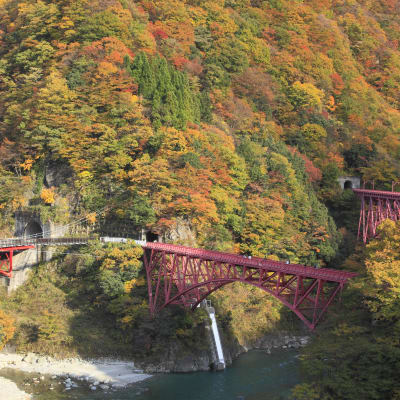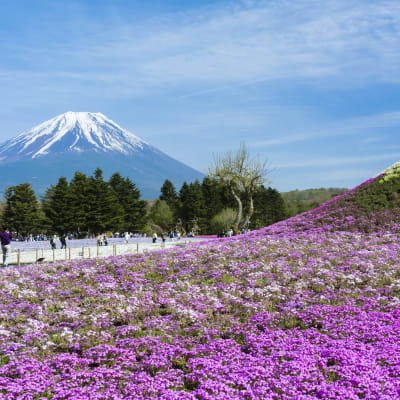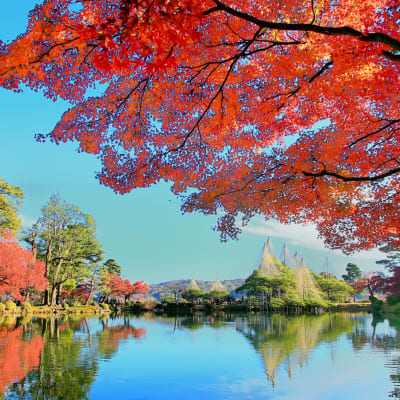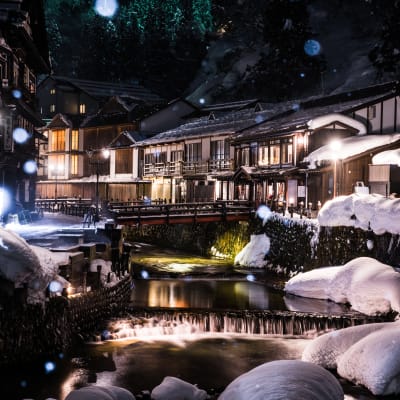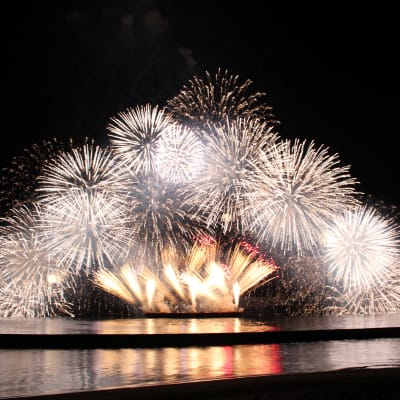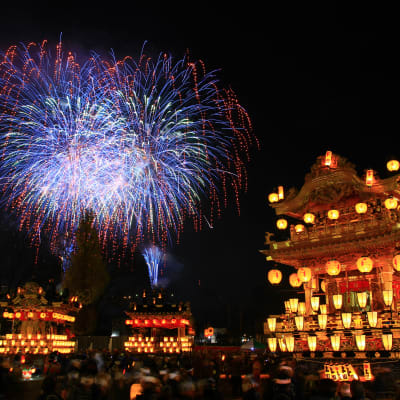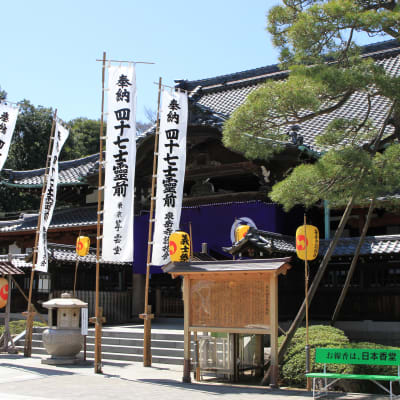Die weiße Jahreszeit beginnt
Das Ende des Kalenderjahres bietet saisonale Highlights wie die weit verbreitete Winterbeleuchtung, den Beginn der Skisaison und häufig auch den ersten Schneefall. Das Wetter und die Temperaturen reichen von herbstlicher Kühle bis hin zu richtiger Winterkälte. In Japan beginnen am Ende des Monats die Oshogatsu-Ferien zum Japanischen Neujahrsfest, wobei Weihnachten eher ein symbolisches Ereignis ist. Der klare, kalte Winterhimmel lässt das Bergpanorama vor azurblauem Hintergrund erscheinen. Und zum Ende des Jahres sind diese Bilder alles ganz besonders beeindruckend.
Was Sie wissen sollten
- Von Mitte bis Ende Dezember ist das Skifahren in der Vorsaison in einigen Skigebieten möglich
- Die Tage um das Neujahrsfest herum sind eine stark frequentierte und teure Reisezeit, da einige Unternehmen für ein paar Tage schließen
- Die Oshogatsu-Ferien dauern in der Regel vom 29. Dezember bis zum 3. Januar, je nachdem, wie die Tage fallen
- In vielen Schreinen und Heiligen Stätten finden am 31. Dezember Veranstaltungen anlässlich des Neujahrsfestes statt

Der schneebedeckte Berg Fuji vom Ashinoko-See aus gesehen
Eine neue Jahreszeit, ein neues Jahr
Winter Das Wetter in Japan ist sehr unterschiedlich. Wie Sie vielleicht bereits vermuten, sind südliche Orte wie Kyushu das ganze Jahr über wärmer als Hokkaido . In den Bergregionen beginnt es im Spätherbst zu schneien und die Temperaturen können an kälteren Orten wie Nagano und Niigata unter null Grad Celsius sinken. Sonnige Tage in Tokyo können sich warm anfühlen, Kyoto wird allerdings überraschend kalt.
Die Weihnachtstage werden – als Import aus westlichen Ländern – auch in Japan gefeiert, aber sie unterscheiden sich hierbei deutlich von Feiertagen im Kreise der Familie, wie es in vielen englischsprachigen Ländern üblich ist. Weihnachtsdekorationen findet man überall, aber es werden nur wenige Geschenke ausgetauscht. Von einer Weihnachtsgans als Festessen hat noch nie jemand etwas gehört – ein Weihnachtsausflug zu KFC wird dagegen häufig unternommen. Paare gehen abends zu einem romantischen Dinner aus, anstatt Zeit mit der Familie zu verbringen. Glitzernde Stadtviertel in der Innenstadt wie Ginza und die Gegend Marunouchi um Bahnhof Tokyo sind perfekte Gegenden für ein elegantes Dinner und festliche Beleuchtung.
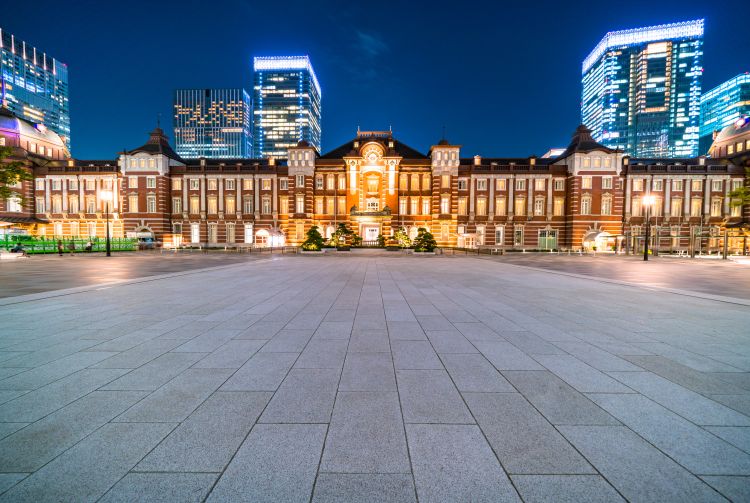
Das schicke und elegante Marunouchi-Viertel
In Japan sind der Silvesterabend und die ersten Tage des neuen Jahres die wichtigsten Feiertage. Die meisten Besucher können den Jahreswechsel zwar nicht im Kreise ihrer Familie feiern, aber Sie können Schreine besuchen und das neue Jahr wie ein Einheimischer erleben. An vielen Orten finden Veranstaltungen statt, für Besucher werden warmer Sake, Toshikoshi Soba (Buchweizennudeln) und Schweinefleischeintöpfe angeboten.
Die Nacht zum Leuchten bringen
Japan ist nicht nur für atemberaubende Feuerwerke bekannt, sondern auch für aufwendige Lichtinstallationen in der Winterzeit. Viele beginnen Mitte November und ziehen sich durch den Winter, was den kühlen Stadtnächten einen besonderen Glanz verleiht.
In ganz Tokyo finden Sie große Lichtinstallationen und wenn Sie Zeit haben, können Sie sogar mit der Yamanote-Linie durch die Stadt fahren, um einige von ihnen anzuschauen. Besucher können die Caretta Illumination bestaunen, die nur wenige Gehminuten von der Station Shimbashi entfernt ist. Das Weihnachtsevent in der Innenstadt in der Nähe der Station Roppongi läuft bis zum 25. Dezember.
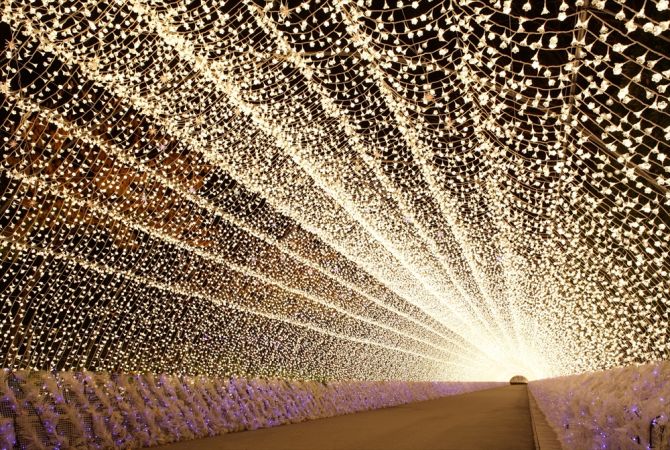
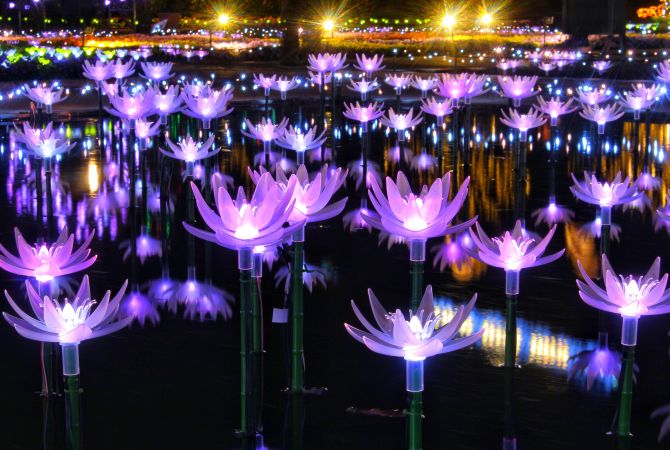
Weitere große Veranstaltungen in ganz Japan sind unter anderem: die Sagamiko Illumillion in Kanagawa ; der Sternenlicht-Umzug in Sendai ; Das Blumenspektakel von Ashikaga in Tochigi ; die Winterillumination Nabana no Sato in Mie und die Osaka Hikari Renaissance (14.12. bis 25.12.). Besonders zu erwähnen ist auch das beeindruckende Lichterfest Kobe Luminarie , zum Gedenken an das große Hanshin-Awaji-Erdbeben von 1995.
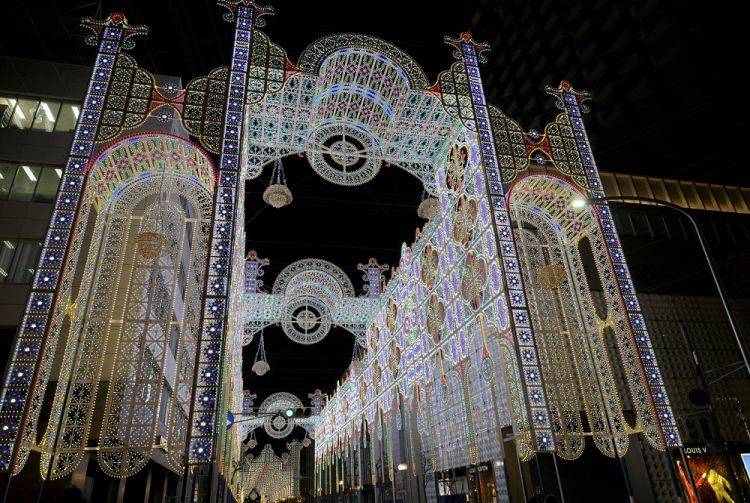
Eine der Lichtinstallationen im Lichterpark Kobe
Einläuten der Skisaison
Die meisten beliebten Skigebiete sind jedoch bereits ab Mitte bis Ende Dezember in Betrieb. Wenn zu Beginn der Saison noch zu wenig Schnee gefallen ist, setzen die Resorts Schneekanonen ein, um die Skigebiete entsprechend zu präparieren. Die großen Resorts auf Hokkaido können bereits ab Ende November öffnen.

Hakuba und Shiga Kogen in Nagano sind ebenso beliebte Gebiete für einen Skiurlaub wie auch Echigo-Yuzawa und Myoko in Niigata . Zao Onsen und Appi Kogen sind im weiter nördlichen Bereich eine gute Wahl. Überprüfen Sie bei der Planung Ihres Urlaubs am besten online die Öffnungszeiten dieser Gebiete, da sie von Jahr zu Jahr variieren.
Zwei Fliegen mit einer Klappe schlagen
Viele japanische Skigebiete sind gleichzeitig Thermalbäder oder bieten zumindest einige Onsen-Bäder in der näheren Umgebung. Onsen-Bäder sind einen Besuch wert, denn sie bieten nach einem Ski-Tag angenehme Entspannung und sind auch eine schöne Alternative zum Skifahren oder Snowboarden.

Nozawa Onsen von den Skipisten aus gesehen
Veranstaltungen im Dezember
Ein Besuch der Ramen Expo in Osaka ist eine gute Möglichkeit, der winterlichen Kälte zu entgehen. Die Veranstaltung findet an vier Wochenenden im Monat statt, kostet keinen Eintritt und bietet eine Auswahl von rund 40 Anbietern von Nudelspezialitäten. Das Nankinmachi-Laternenfest in Chinatown findet von Anfang bis Ende Dezember statt in Kobe und zieht mit prächtigen Farben und Düften die Besucher an.

Das Nankinmachi-Laternenfest ist ein buntes Fest.
Eines der einzigartigen und ungewöhnlichsten Feste ist das Namahage-Event , das am Silvesterabend in Oga City in der Präfektur Akita stattfindet. Künstler, die als Namahage (eine Gottheit, die Unglück vertreibt und Glück bringt) verkleidet sind, tanzen und stellen sich zur Begeisterung der Zuschauer zur Schau. Die üblichen Silvesterfeiern und Partys finden in den Bars und Clubs in den Großstädten statt.
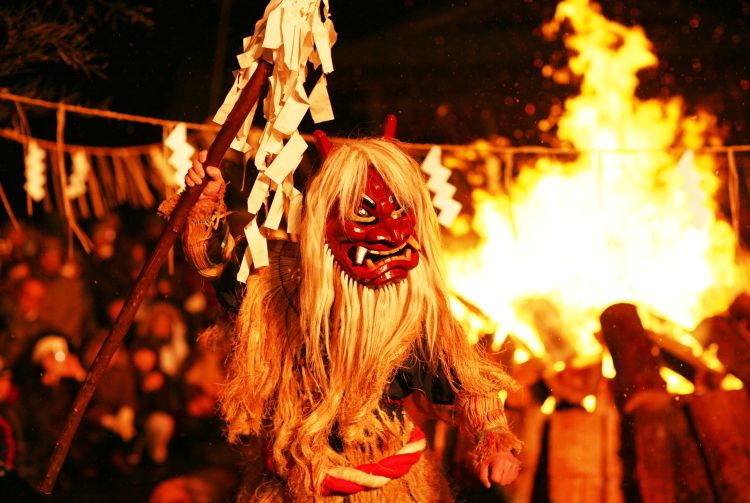
Ein Namahage in Aktion































